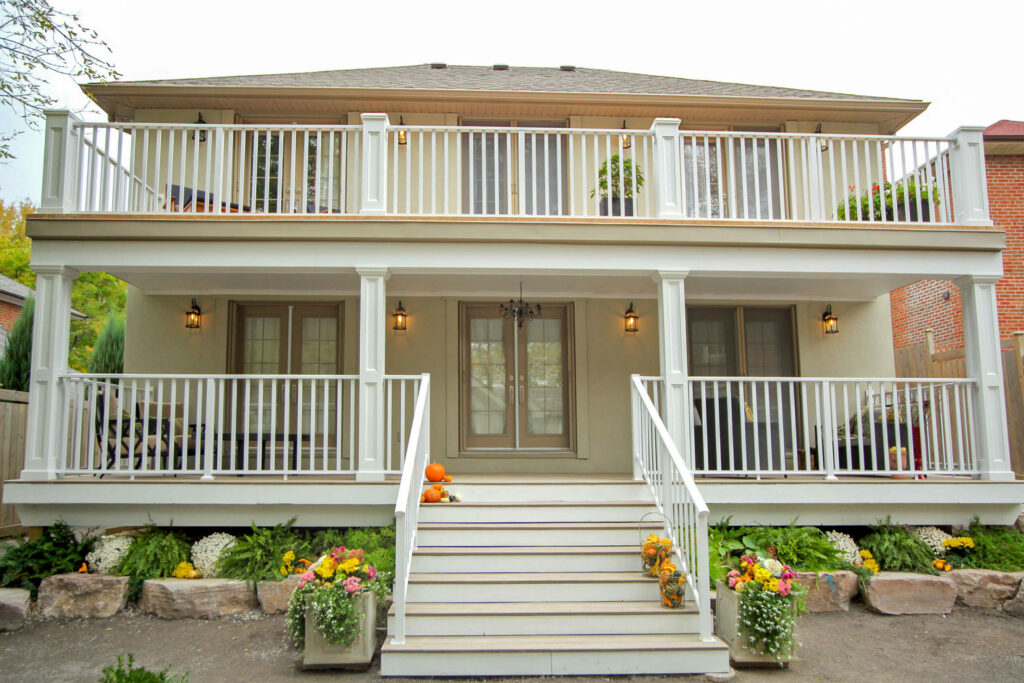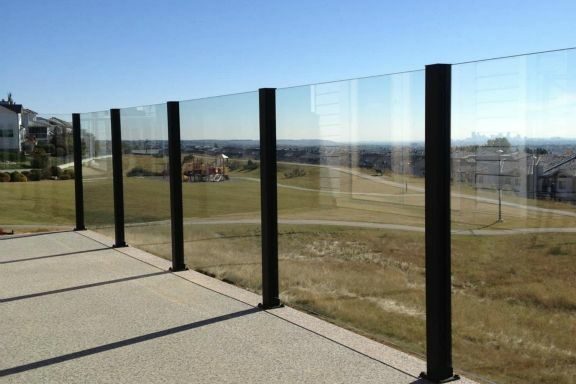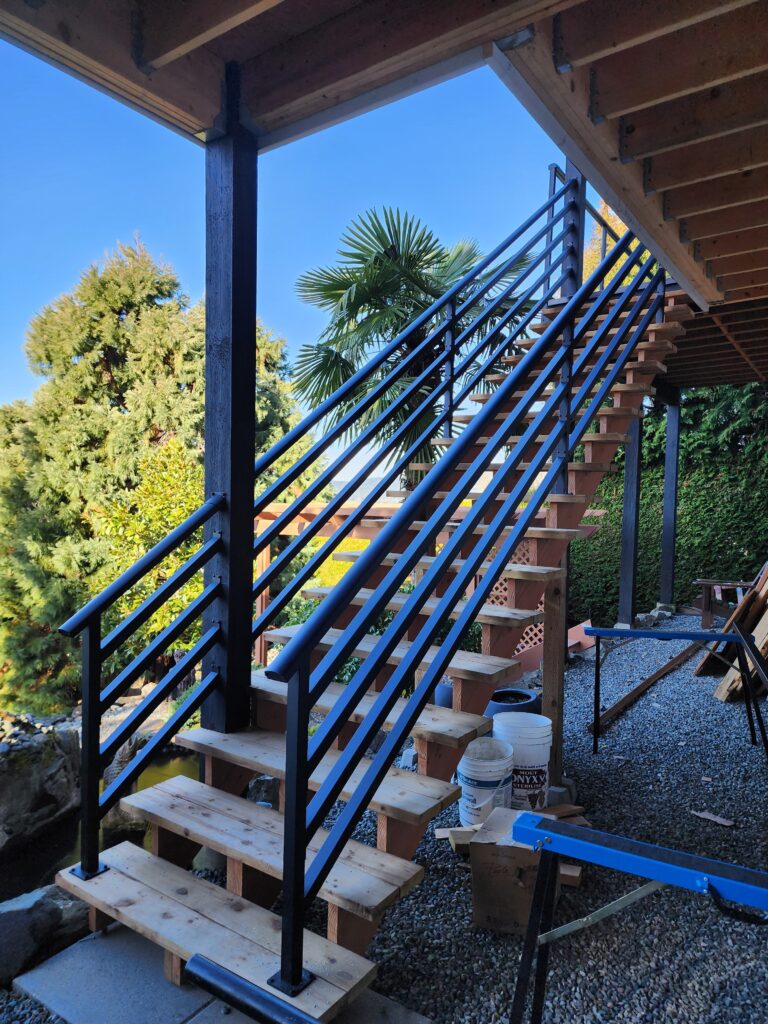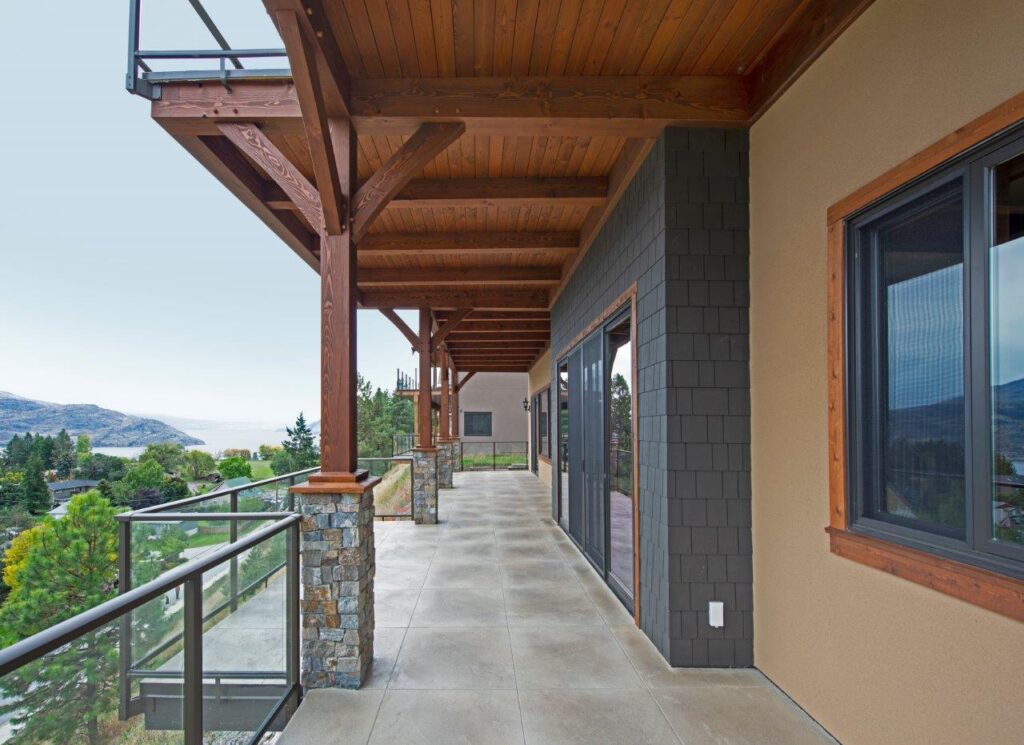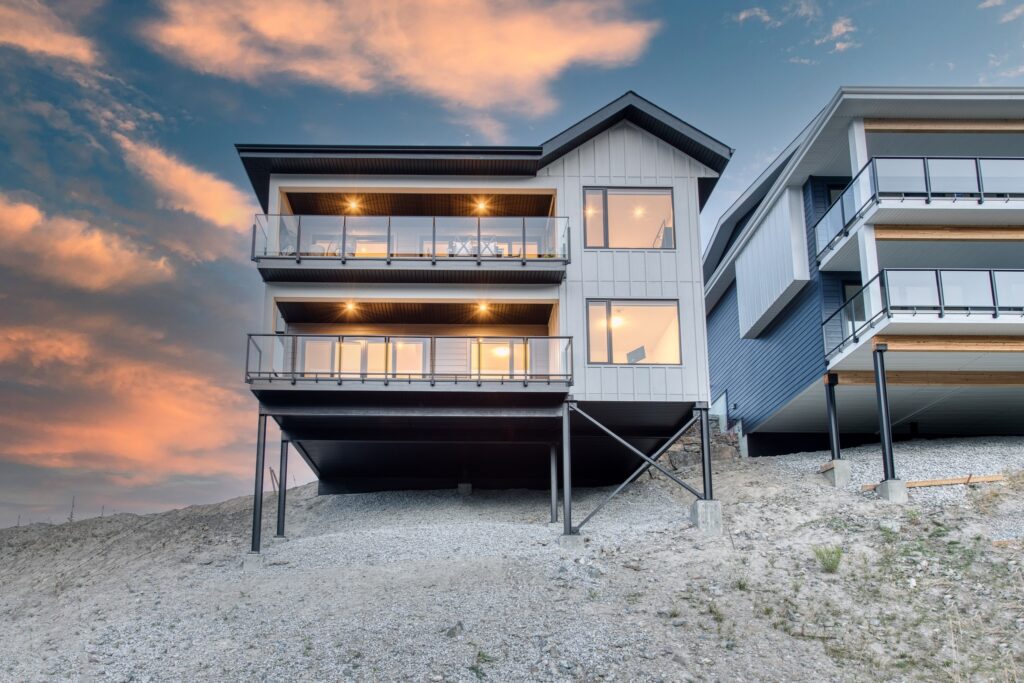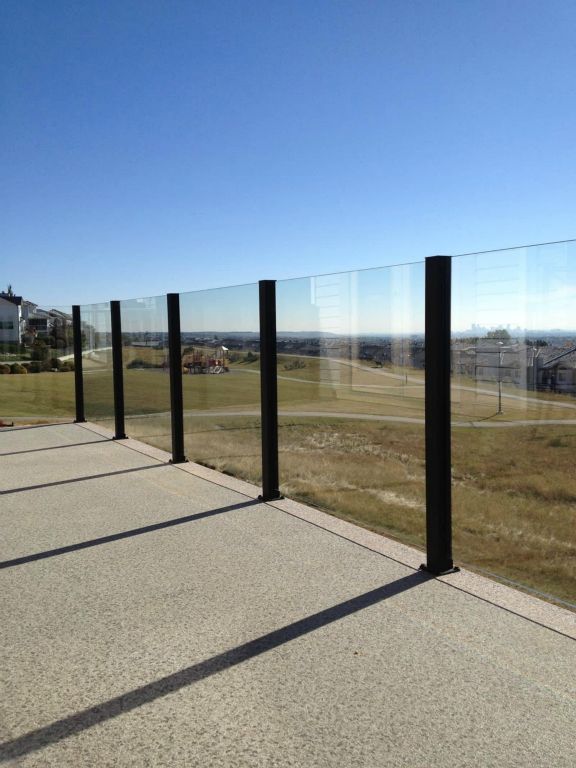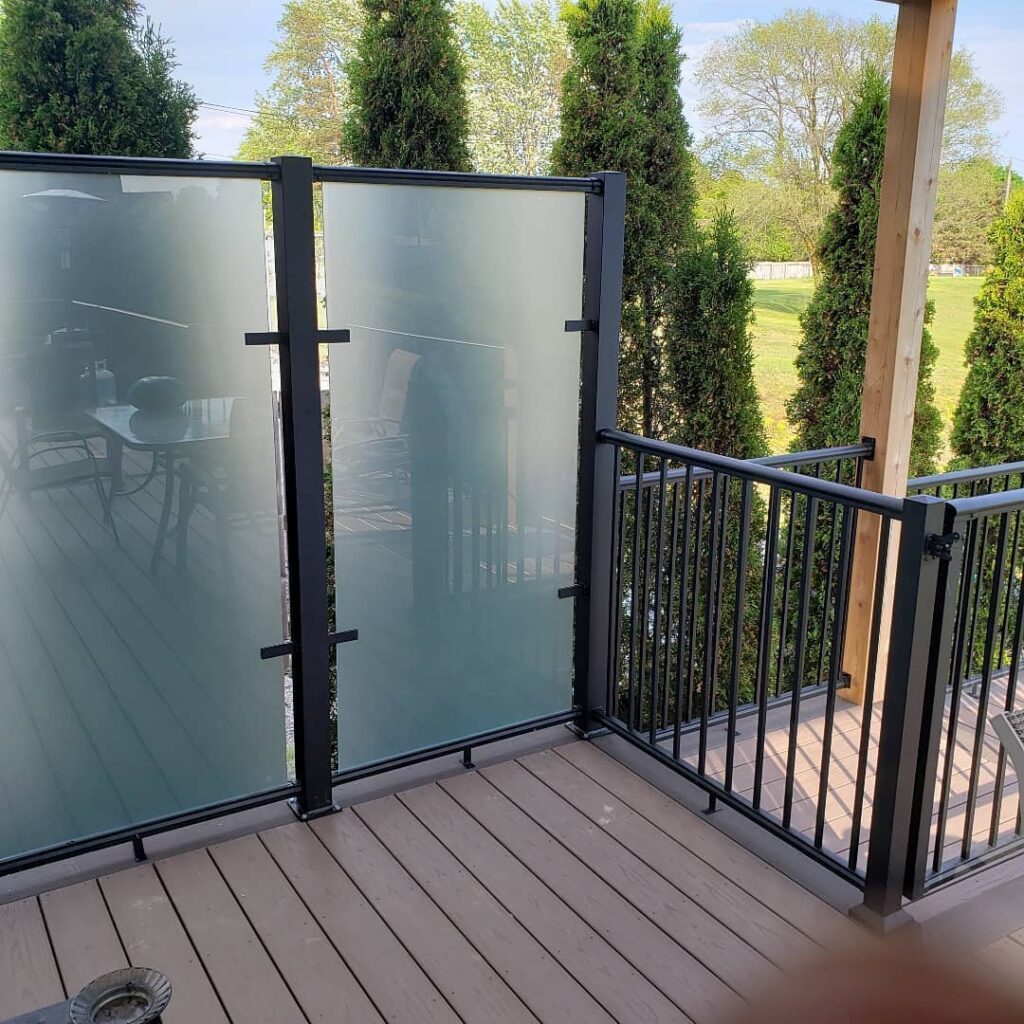When it comes to creating an outdoor oasis at home, your deck truly says it all. Decks are often the focal point and aesthetic highlight of your entire yard, so it’s important to get it right.
Choosing the right deck railings means weighing out all your options—everything from style & appearance, cost, and maintenance considerations to durability in different weather conditions.
In this blog we’ll compare the pros and cons of 2 popular railing materials: aluminum vs vinyl deck railings.
While both offer unique advantages, the best material for your home comes down to your own needs, preferences, and location.
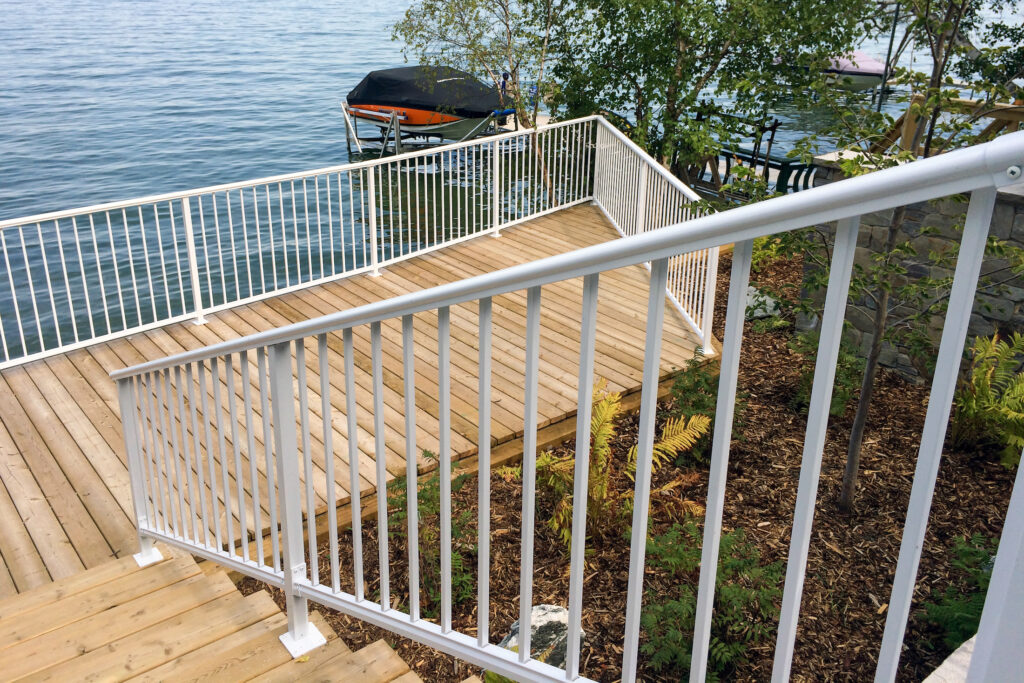
Weathering the Elements: Vinyl vs Aluminum Railing
Aluminum and vinyl differ significantly when it comes to harsh weather conditions.
Aluminum Railings in Hot & Cold Weather
Aluminum showcases superior durability in hot climates with high levels of UV radiation.
Boasting a phenomenal ability to disperse heat, aluminum can withstand its shape up to 1000 degrees fahrenheit, making it impervious to corrosion, splintering or cracking.
In extremely cold climates, aluminum actually strengthens due to its face-centred cubic crystal structure, also known as FCC. The structure of aluminum has very little sensitivity to changes in temperature, and therefore does not affect its yield strength.
Vinyl Railings in Hot & Cold Weather
Vinyl on the other hand, tends to face more of a struggle in extreme temperatures.
Heat exposure can cause vinyl to expand, which leads to warping or structural distortion.
Too much cold exposure can cause vinyl to become severely brittle, making it prone to cracking and breaking.
While vinyl tends can offer long-lasting durability in temperate climates, aluminum is a far better choice for climates with harsh weather conditions.
Strength & Durability
Aluminum’s lightweight, low maintenance nature makes it one of the most advantageous materials for railings. The fact that it’s so light makes it incredibly easy to cut, making the installation process a breeze for contractors or DIY homeowners.
Aluminum is approximately 3.5 times stronger than vinyl, boasting a specific strength of around 260 megapascals per cubic meter (MPa/m³). Vinyl on the other hand, can’t necessarily be measured in strength, given its’ plastic like properties and malleability. What it can be recognized for is its immense flexibility, tensile strength and impact resistance, making for a versatile and durable material.
Vinyl is commonly celebrated for its resistance to rotting, insect damage, and high levels of moisture. It is said to be 5 times stronger than wood, and with a lifespan of up to 50 years. This being because of its’ high level strong durability and an ability to withstand such strong elements.
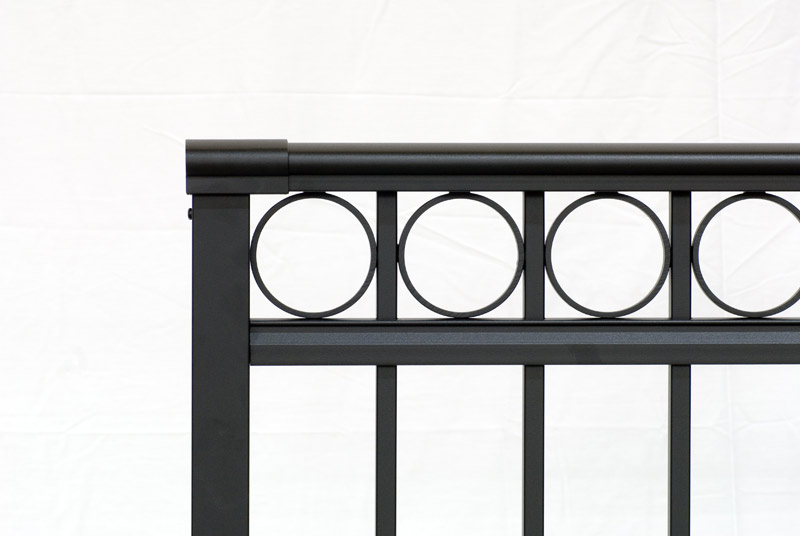
Design Considerations
Vinyl deck railings tend to hold a more traditional, modern day look—making for an easy choice if you know this is your preferred style.
However, because of its overall construction, it can be difficult to achieve any other look. It’s important to note that vinyl can be quite bulky and robust—and because vinyl is dyed all the way through, the color options can be limited and near impossible to customize.
Aluminum railings, on the other hand, offer a wide array of design versatility with options like powder coating, custom colors, intricate patterns and ornamental styles that achieve a modern and customizable look.
At Deksmart, our aluminum railings are all powder coated—which involves a unique application process with finely ground pigment particles. This is unlike traditional liquid paints, which can have limitations in achieving certain hues.
Another benefit of powder coating is avoiding rust. With powder coated aluminum, you’ll never have to worry about repainting or refinishing. On top of that, there’s minimal cleaning & maintenance required with aluminum.
The Costs of Aluminum vs Vinyl Deck Railings
Compared to vinyl, aluminum deck rails have a higher initial cost that ranges from $90 to $120 per linear foot.
However, they make an excellent long-term investment due to their weather-resistant and corrosion-resistant properties—leading to lower upkeep costs over time. On top of its high level durability, you can expect your aluminum railings to have a lifespan of around 25 years.
Vinyl railings come at a more budget-friendly price, typically ranging from $50 to $60 per linear foot.
While they may not withstand weather conditions as well as aluminum, low cost vinyl requires minimal maintenance and boasts a longer lifespan—lasting up to 50 years.
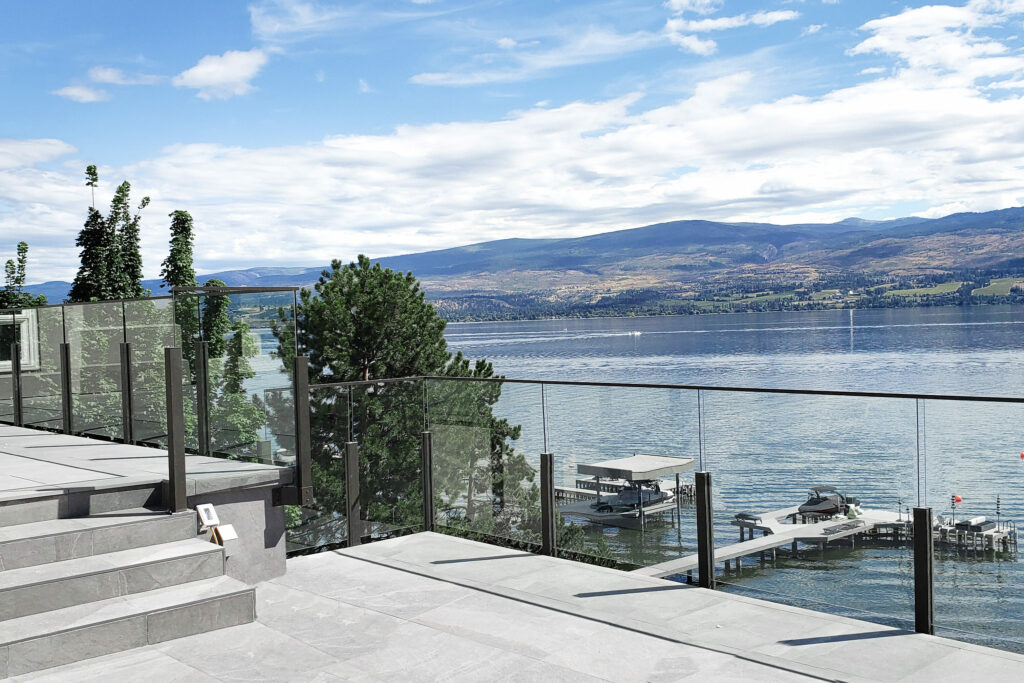
Climate-Related Factors: Aluminum vs. Vinyl Railings
Climate considerations play a crucial role when comparing vinyl or aluminum railing systems for your home. When choosing which material serves you best, consider tailoring your choice around heat, cold, UV levels, and your proximity to the ocean.
Extreme Heat:
- Aluminum: Disperses heat extremely well, meaning it won’t crack or splinter under high temperatures. Aluminum remains cool to the touch, providing comfort in warmer climates
- Vinyl: Vinyl railings can morph when exposed to extreme heat. While it’s generally resilient, prolonged exposure to scorching temperatures can affect the structural integrity of vinyl railings
Cold Climates:
- Aluminum: Strengthens in colder climates, making for a better investment in colder climates like the Canadian prairies, Alaska, or Colorado
- Vinyl: Extreme cold can make vinyl railings less malleable and more prone to cracking and breaking
UV Exposure:
- Aluminum: The powder coat finish on aluminum railings provides excellent UV resistance, preventing the material from fading, chipping, or peeling due to prolonged exposure to sunlight. This is a crucial factor to consider in high UV environments where constant sun exposure can lead to structural degradation
- Vinyl: While it can withstand UV exposure, a vinyl railing may be prone to fading over time. Additionally, the surface can become warmer to the touch in direct sunlight compared to aluminum
Coastal Areas:
- Aluminum: Offers resilience against salt damage, making it suitable for coastal regions. At Deksmart, we offer a Limited Warranty for any product that resides within one mile of coastal water
- Vinyl: Prone to potential deterioration in coastal areas due to salt exposure, making it less ideal for such environments
In Summary: Aluminum vs. Vinyl Deck Railing
To sum up the vinyl vs aluminum railing debate, the choice you make will depend on your unique needs.
Vinyl, glass, and aluminum are all recyclable materials, each offering an environmental benefit towards eco-friendly building design.
Factors such as: climate conditions, cost, design, and overall structure and durability are key to consider when making an informed choice.
If you love a traditional look and value resistance to rotting and insect damage, a vinyl railing system may be your preferred choice.
If you prefer a more modern, customizable look – and you live in a harsh climate – UV resistant aluminum deck railings are likely the best choice for you.
DekSmart Railings
At Deksmart, we’re happy to offer the highest quality, Canadian made Glass & Aluminum Railing Systems to best suit your outdoor space and help you meet your sustainability goals.
We also offer a Limited Warranty, an easy, DIY home installation process, and have everything made to company code, conveniently available at distributors across North America.
To learn more about our wide range of products and services, visit our website today and locate your nearest dealer!
- Related content:
